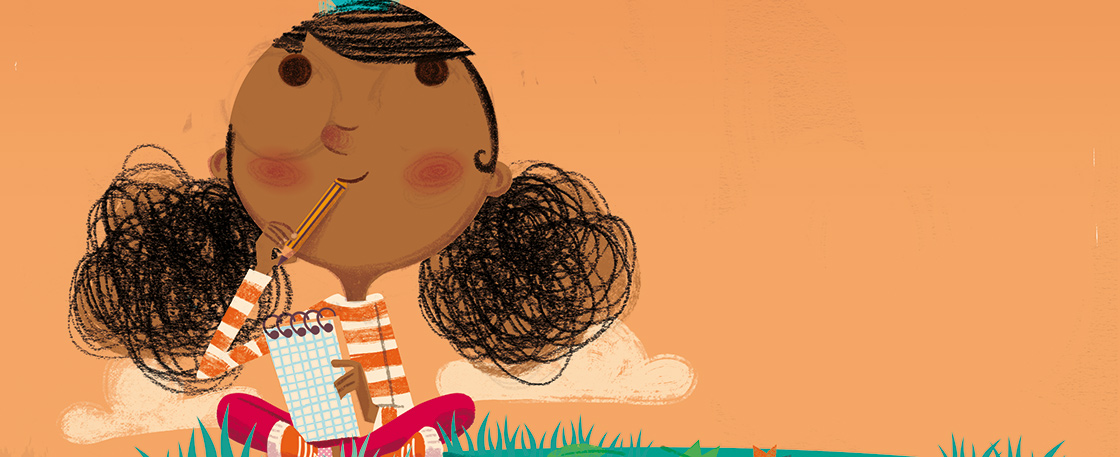Hush.
Grab a pencil
some paper
spunk.
Let loose your heart—
raise your voice.
What if I have many voices?
Let them dance together
twist and turn
like best friends
in a maze
till you find
your way
to that one true word
(or two).

Poet Kwame Alexander muses about finding inspiration in this bright and playful poem.
Learning Objective: Students will explore the words and phrases in a poem to help them understand the ideas it expresses.
How To Write A Poem
Hush.
Grab a pencil
some paper
spunk.
Let loose your heart—
raise your voice.
What if I have many voices?
Let them dance together
twist and turn
like best friends
in a maze
till you find
your way
to that one true word
(or two).
This poem was originally published in the September 2017 issue.
From OUT OF WONDER. Text copyright © 2017 by Kwame Alexander. Reproduced by permission of the publisher, Candlewick Press, Somerville, MA.
More About the Story
Skills
Interpreting text, paraphrasing, point of view, imagery, text features, poetry writing
Complexity Factors
Levels of Meaning
The poem offers instructions or writing a poem. At the same time, it celebrates the idea that freedom and creativity, not instructions, are needed for writing poetry.
Structure
The poem is written in free verse.
Language
The poem includes the word spunk, which may be unfamiliar to some readers, as well as a good deal of figurative language.
Knowledge Demands
Some prior experience reading poetry will be helpful.
1. Preparing to Read
Set a Purpose for Reading (2 minutes)
2. Reading the Poem
Read the poem aloud for the class or play our audio version. Then discuss the following questions.
Close-Reading and Critical-Thinking Questions (15 minutes)
3. Skill Building
Invite students to “follow the instructions” of this poem and write one of their own!